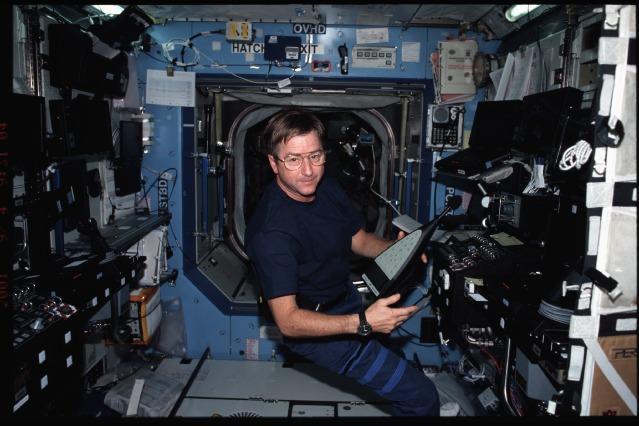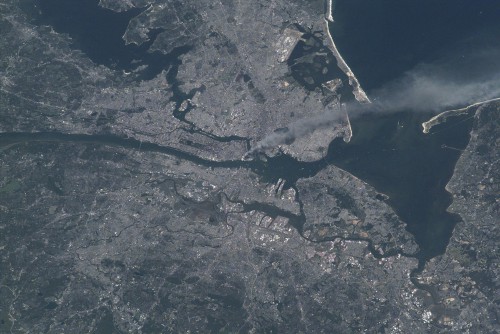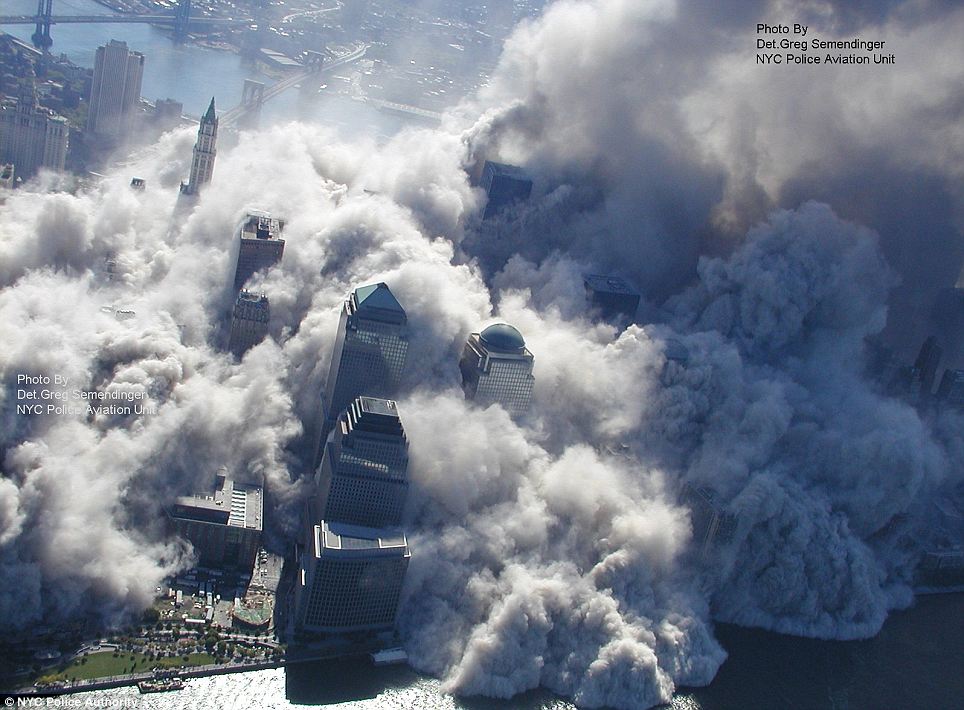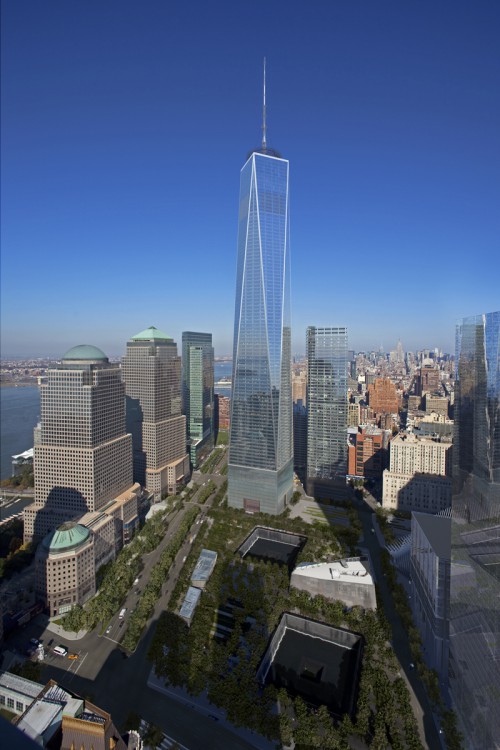
On Sept. 11, 2001, one single American was not living on planet Earth. From a place of silence and isolation, he witnessed the chaos and tragedy that terrorism unleashed on our nation, using commercial airliners as missiles to destroy the World Trade Center’s Twin Towers, the Pentagon, and another flight, which crashed in Pennsylvania, claiming thousands of innocent lives in cold blood. The International Space Station (ISS) and Expedition 3 crew were orbiting 250 miles above the Earth, and NASA astronaut Frank Culbertson, Commander of that mission, is recounting his experience watching it all unfold from 250 miles high.
Culbertson opened up and spoke of his memories about that day in the most recent edition of the Kennedy Space Center Visitor Complex “Tell Me a Story” video series. Having launched on Aug. 11, 2001, he and his crewmates had been in orbit 30 days, exactly, when the unthinkable occurred. The crew was tasked with completing routine medical examinations on each other as part of their duties, and it was Culbertson’s responsibility, as Crew Medical Officer and Commander of the mission, to inform the ground crew of the results via a secure loop—a fairly routine task. However, “routine” was the least proper description for the rest of the conversation that took place.

Culbertson and his Russian crew mates Vladimir Dezhurov and Mikhail Turinand all gathered around the speaker listening, his colleague on the ground explained what was happening in New York City—that airplanes had flown into the World Trade Center, an airplane was flown into the Pentagon, and that (at the time the conversation was happening) another airplane had just been lost somewhere in Pennsylvania. As he listened to the information, he realized that the ISS was crossing over southern Canada and fast approaching New England, so he quickly found a video camera and a window facing in the correct direction.
Once the ISS was positioned over Maine, about 400 miles away from New York City, Culbertson positioned himself in the window to capture the haunting sight from above the destruction.
“I could clearly see the city, it was a perfect weather day all over the United States, and the only activity I could see was a big, black column of smoke coming out of New York City, over Long Island, and over the Atlantic,” said Culbertson. “As I zoomed in with the video camera, I saw this big gray blob basically enveloping the southern part of Manhattan. What I was seeing, was that the second tower had come down.”
At the time, Culbertson had assumed he was seeing more explosions. He guessed that tens of thousands of people were being hurt or killed. Like most of the rest of us, Culbertson couldn’t believe his eyes and didn’t know what exactly was going on. What he did know, however, especially being that he is a retired Navy Captain, was that he was seeing his country and fellow Americans under attack.
“That’s when it really became painful,” said Culbertson. “It was like seeing a wound in the side of your country, of your family, your friends.”

At this point, the ISS and its crew were passing overhead at nearly 4 miles per second, watching New York quickly disappear over the horizon. This meant that they had 90 minutes to gather their equipment, set up every camera facing downward, and prepare to capture the sights on the next pass. One and a half hours later they crossed Chicago, and they could see all the way to Houston and North Carolina. Moments later, they were directly over the Pentagon in Washington D.C., looking straight down at the gash in the side of the building.
While crossing over the eastern shore of Virginia and looking toward the north, they saw the column of smoke rising as a result of the obliteration in New York City. They took video and still shots of everything in their view. Over each orbit, they tried to take in more of what had happened. Something Culbertson noticed after two orbits is that all the contrails that usually laced the skies from the air traffic had disappeared since all flights in the country had been grounded, except for one lone contrail. Air Force One left its mark in the sky as it flew from the central area of the United States back to Washington D.C., carrying President Bush.
VIDEO: Frank Culbertson tells of his experience of 9/11 from onboard the ISS. Credit: KSC Visitor Complex
Sadly, on the morning following Sept. 11, Culbertson was informed that a close friend of his, Charles “Chic” Burlingame III, lost his life on the airplane that struck the Pentagon, as he was the captain of the flight. Burlingame was Culbertson’s former classmate from the United States Naval Academy. This personalized the tragedy for Culbertson, and about 10 days following the attacks, what was supposed to be a 30th class reunion for them turned into more of a memorial for Burlingame and his service to the country.
“What a terrible loss, but I’m sure Chic was fighting bravely to the end,” Culbertson said. “And tears don’t flow the same in space.”

Culbertson sent a personal message to Burlingame’s family and classmates, which they played during the reunion. Also, since he and Burlingame were both members of the Drum and Bugle Corps at the U.S. Naval Academy, he gave a unforgettably moving performance of “Taps” on his trumpet as a special tribute to his friend.
About four weeks after the attacks occurred, Culbertson was looking out the window of the ISS as it made its pass over Afghanistan, which was immediately recognizable in the middle east due to its lack of lights. He had heard rumors about who was being held accountable for the acts of terrorism toward the United States, and what our response would ultimately be. Seeing flashes of light over the region, he realized that he was witnessing combat from space, for the first time ever.
Reflecting upon what he learned from this experience, he left us with a powerful thought near the end of his story.
“The thing that I learned flying in space, was that it is very difficult for people to get along, sometimes. But, things like the ISS are a great example of how people can come together from different cultures, different languages. You take this hardware up there, it fits the first time, going 17,500 miles per hour, in space, in a vacuum, because people learned how to work together and overcome their differences.”
Culbertson’s unique and exclusive vantage point from space led to his deep insight on how mankind’s greatest possibilities can be achieved as a result of peaceful collaboration. Almost 3,000 people perished as a result of the attacks that occurred on Sept. 11, 2001; Culbertson’s perspective honors their memory in a beautifully unique way.
“I think it’s important for people to continue to learn the lessons from this and make sure that we are in fact making ourselves a better country as a result of it, not regressing or turning inward, or changing ourselves into a society that we won’t be proud to pass on to our grandchildren and great-grandchildren.” — Astronaut Frank Culbertson



